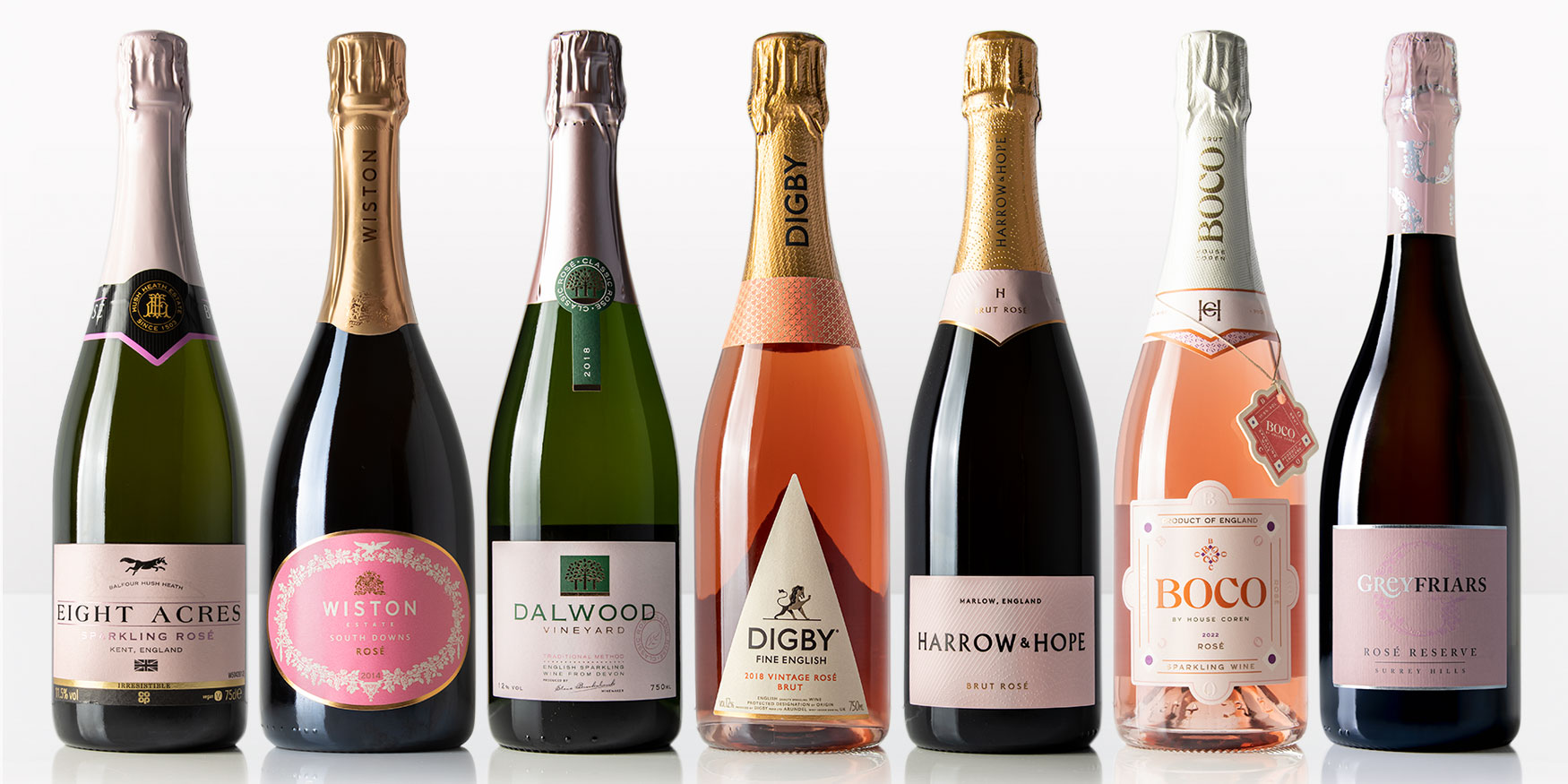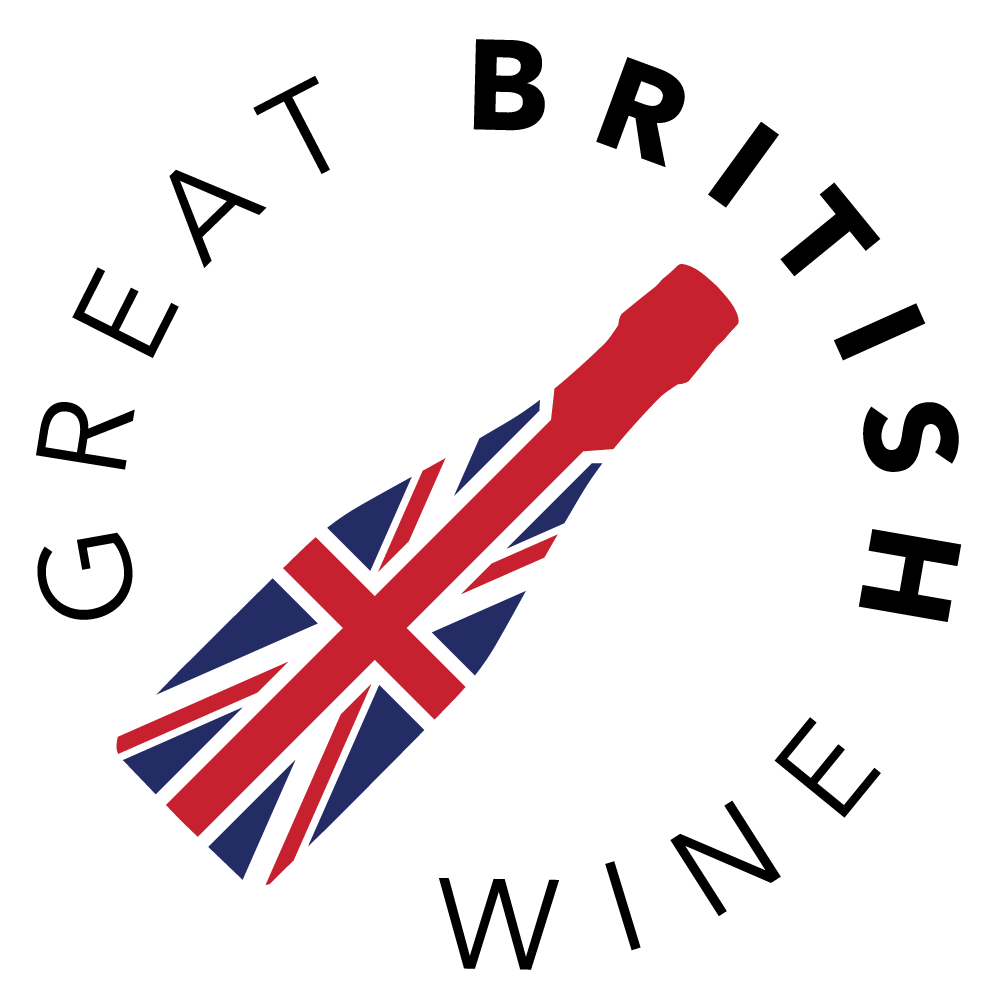
Picking up from where we left off in the GBW April Round-up Part 1, I’ve continued my adventures in English Rosé with a focus on sparkling expressions. My mission was to find a selection of the hottest new releases that demonstrate the breadth and range of styles on offer – and what a line-up I ended up with!
Taking the top spot in this closely-fought selection was the Digby Rosé Vintage 2018 (£50). This wine impressed with its deep pink hues and opulent ripe summer berry fusion, as well as its soft, rounded palate. The Wiston Vintage Rosé 2018 (£54) expressed similar exuberance, another deeply coloured rosé that added savoury, almost meaty complexities. Continuing the richer theme, Harrow & Hope’s Rosé Brut 2019 features incredibly ripe and concentrated cherry and cranberry flavours. It’s a really fruit-forward expression that also provides a soft creaminess on the palate.
In the second half of the selection, things take a lighter, more delicate turn, beginning with Dalwood’s English Sparkling Rosé 2018 (£32). This is a considered blend of Seyval Blanc and Pinot Noir, resulting in a wine with immediate citrus freshness, and slender cranberry and cherry tones. Next up is the Greyfriars Rosé Reserve, a non-vintage blend of mostly 2020 that brings a nutty, spicy complexity on top of ripe strawberries. Then we have a little bit of a bargain, the Co-op Eight Acres English Rosé (£19.50). Produced by Balfour Winery, this offers a superb entry point to English Sparkling Wine, providing exhilarating freshness with its tangy cranberry and raspberry flavours.
Finally, I have one additional wine, a late addition to the article and tasted separately from the main six. The Boco House Coren Rosé 2022, a Charmat method (the same method used for producing Prosecco) that delivers a particular take of expressive, fresh Pinot Noir rosé. It shouldn’t be overlooked and will surely be a big hit this summer.
Digby Vintage Rosé 2018
• SPARKLING WINE OF THE MONTH •
Grapes: Pinot Noir, Pinot Meunier & Chardonnay
Region: Various
It’s been quite a wait since the last Digby Vintage Rosé, four years in fact, but boy, was it worth the wait. This wine includes fruit from the first harvest of what is now Digby’s own Hilden Vineyard, combined with fruit from four counties in total.
Immediately on pouring, this wine catches your eye with its deeper hues of copper and pink. The nose is full of ripe strawberry and cranberry, with hints of strawberry shortbread and candied orange peel.
To taste, the Digby demonstrates opulence and broadness, plus lots of ripe strawberry and raspberry flavours. The palate is expansive, surrounded by a generous, enveloping creaminess that is set alight by racy, crisp acidity.
Overall, this was the stand-out for me thanks to its structure and balance in a selection that was, by all accounts, closely matched.
Wiston Estate Rosé 2018
Grapes: Pinot Noir and Pinot Meunier
Region: Sussex
Sharing a winery and winemaking with the superb Digby Rosé, this Wiston blend of 80% Pinot Noir and 20% Pinot Meunier was another of this month’s stand-outs. Coming from the bountiful and ripe 2018 vintage and following another four-year wait, this is another big hitter from Wiston.
This is really deep in colour – a dark and intense rosé, with a rich nose of ripe raspberry, cherry and blood orange with a savoury undertone.
Much like the nose, the palate is expansive and diverse, with lush cherry and balsamic strawberries, as well as a distinctive rhubarb tang. There’s soft strawberry and hints of stone fruit and orange on the mid-taste, as well as a savoury, almost meaty complexity.
Overall, a young wine by Wiston’s standards, it’s showing superbly right now but will likely continue to evolve and intrigue over the coming years.
Harrow & Hope Brut Rosé 2019
Grapes: Pinot Noir, Chardonnay and Pinot Meunier
Region: Buckinghamshire
What an expressive wine this is! This is the only wine in this round-up made from the more challenging 2019 vintage. Henry Laithwaite explains that while they may have 40% less wine, we drinkers get 40% more in our glasses in sheer concentration.
That’s certainly true in the glass, as this wine is another of the deeper-hued examples, and comes with one of the most fruit-forward expressions I’ve experienced in England.
The Harrow and Hope has lots of ripe cherry, strawberry and peach skin aromas, perhaps even a hint of blackcurrant too and strawberry shortbread hints.
The palate of this wine echoes its colour, with very fruit-forward flavours of ripe cherry, raspberry and cranberry. There’s a stone fruit richness and creamy suggestions, confirming this as one of the more indulgent styles of rosé. It’s certainly one for those that love their rosé to be packed full of expressive red fruit character.
Dalwood Vineyard Brut Rosé 2018
Grapes: Seyval Blanc and Pinot Noir
Region: Devon
Devon’s Dalwood Vineyard has been one of the lesser-known names in the industry that has increasingly caught my attention.
Staying true to the estate’s blending approach, their first rosé wine is forged from a blend of 60% Seyval Blanc and Pinot Noir. It’s no less characterful than any other wine featured in this line-up.
Despite being the palest in colour, the nose on the Dalwood has a charismatic mixture of citrus zest, cherry, candied raspberry and orange blossom, as well as a hint of elderflower and lemongrass.
This has a considered structure, with a waxy lemon complexion initially, followed by softer waves of strawberry and raspberry. There are also light hints of pastry and a slight savoury note that adds interest.
Greyfriars Rosé Reserve
Grapes: Pinot Noir & Chardonnay
Region: Surrey
Greyfriars here in Surrey have always produced characterful and distinctive rosés. This latest bottling is largely made from the 2020 vintage and is a blend of 90% Pinot Noir with 10% Chardonnay.
For such a pale wine, the Greyfriars packs a punch with a distinguished fusion of spice and oak, peach skin, cranberry and raspberry, as well as slightly herbaceous and floral hues.
Again, this has a unique flavour profile, with a nutty almond complexity and spice in addition to cranberry, cherry and raspberry. There’s also that light herbaceous quality, as well as a lick of oak spice on the finish.
Overall, this is distinctive, thoroughly enjoyable and really well priced.
Co-op Eight Acres Sparkling Rosé
Grapes: Chardonnay & Pinot Noir
Region: Kent
I’m always on the lookout for more pocket-friendly options for those new to English Wine, and this is one of the best-priced English Sparkling Rosé options on the market, clocking in at under £20. It’s a youthful, classic blend, predominantly made from the 2020 vintage.
Pale salmon in colour, this wine has classic aromas of cranberry, cherry and zesty citrus fruits. It’s fresh and pristine in style.
The palate is lean and crisp – this is a super punchy, crisp and lively expression of rosé. There are suggestions of sweetness, presumably thanks to a generous dosage, but this remains all about the expressive, youthful red fruit flavours.
House Coren Boco Rosé 2022
Grapes: Pinot Noir
Region: Sussex
Perhaps in contrast to the majority of Charmat method produced in England so far, this new Boco Rosé from House Coren is made from 100% Pinot Noir as opposed to a blend of both classic and PIWI or hybrid grapes.
In colour, the Boco is somewhere in the middle, exhibiting a confident pink hue and a nose to match, with cherry, strawberry, ripe raspberry and suggestions of watermelon.
The palate is fruit-forward and juicy, packed full of summer berries, but with a racy, fresh citrus cut-through of lemon and grapefruit to remind you that this is from England. It’s a classic expression of Pinot Noir Rosé, but in sparkling form.
And what of the unusual name ‘Boco’? It comes from old West Sussex dialect and means ‘lots of’/’much’. That’s appropriate, considering how dangerously moreish this wine is!



Pingback: ≫ Gran Resumen de Vinos Británicos Abril 2023 Parte 2